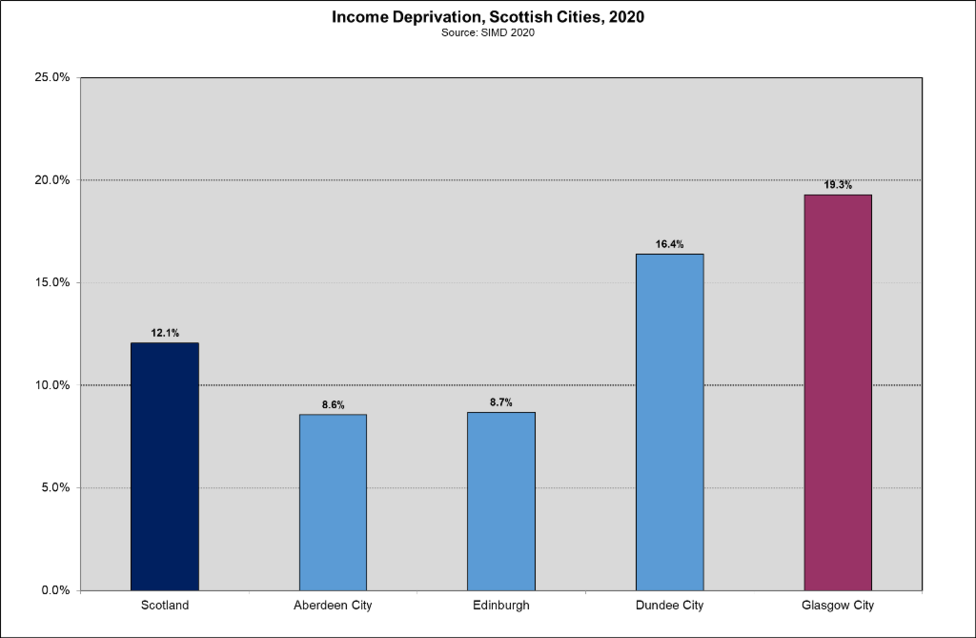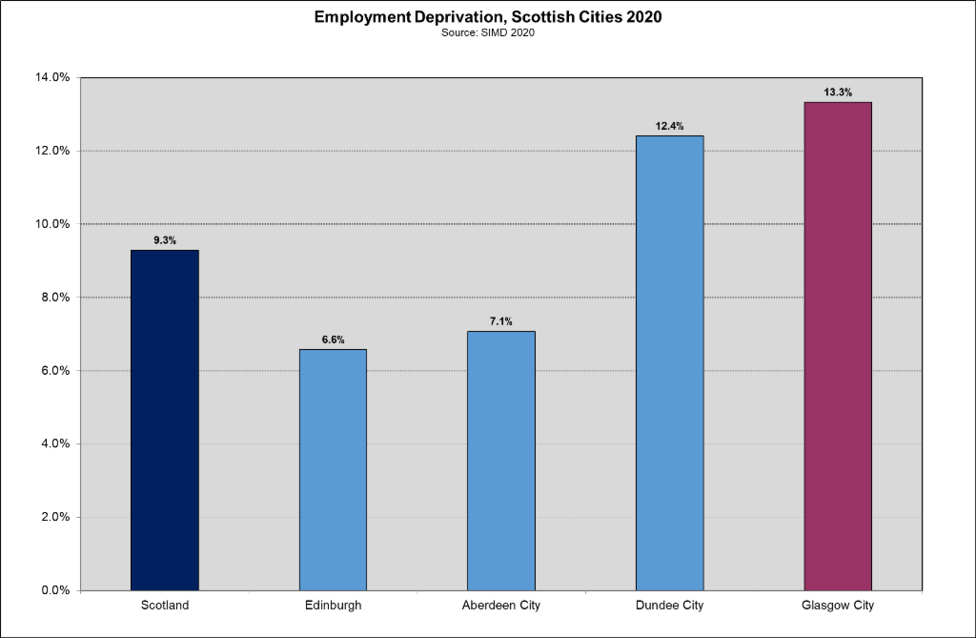Scottish cities
Income deprivation across Scottish cities, 2020
Despite recent reductions in deprivation in the city, Glasgow still has a significantly more income-deprived population than the other large Scottish cities. In Glasgow, nearly a fifth of the population (19.3%) are living in income deprivation compared to 16.4% in Dundee, 8.7% in Edinburgh, and 8.6% in Aberdeen. The Scottish average was 12.1%.
Employment deprivation across Scottish cities
Despite recent reductions in deprivation in the city, Glasgow still has a higher level of employment deprivation than the other large Scottish cities. In Glasgow, 13.3% of the of the working-age population are living in employment deprivation compared to 12.4% in Dundee, 7.1% in Aberdeen, and 6.6% in Edinburgh. The Scottish average was 9.3%.
Notes
Income deprivation - as defined by the Scottish Index of Multiple Deprivation (SIMD), is a measure of the percentage of the population (adults and their dependents) in receipt of Income Support, Employment and Support Allowance, Job Seekers Allowance, Guaranteed Pension Credits, and Child and Working Tax Credits.
Employment deprivation - as defined by the Scottish Index of Multiple Deprivation (SIMD), is a measure of the percentage of the working-age population (men aged 16-64 and women aged 16-60) who are on the claimant count, receive Incapacity Benefit, Employment and Support Allowance, or Severe Disablement Allowance.
SIMD - Scottish Index of Multiple Deprivation provides a relative measure of deprivation based on indicators from seven domains – income, employment, health, education, access, housing, crime. The index identifies multiple deprivation for 6505 small areas (data zones) across Scotland. There have been five versions of SIMD to date. The initial index of 2004 (SIMD 2004) has been revised five times in 2006 (SIMD 2006), 2009 (SIMD 2009), 2012 (SIMD 2012), 2016 (SIMD 2016) and 2020 (SIMD 2020). There is more information on the SIMD site.
